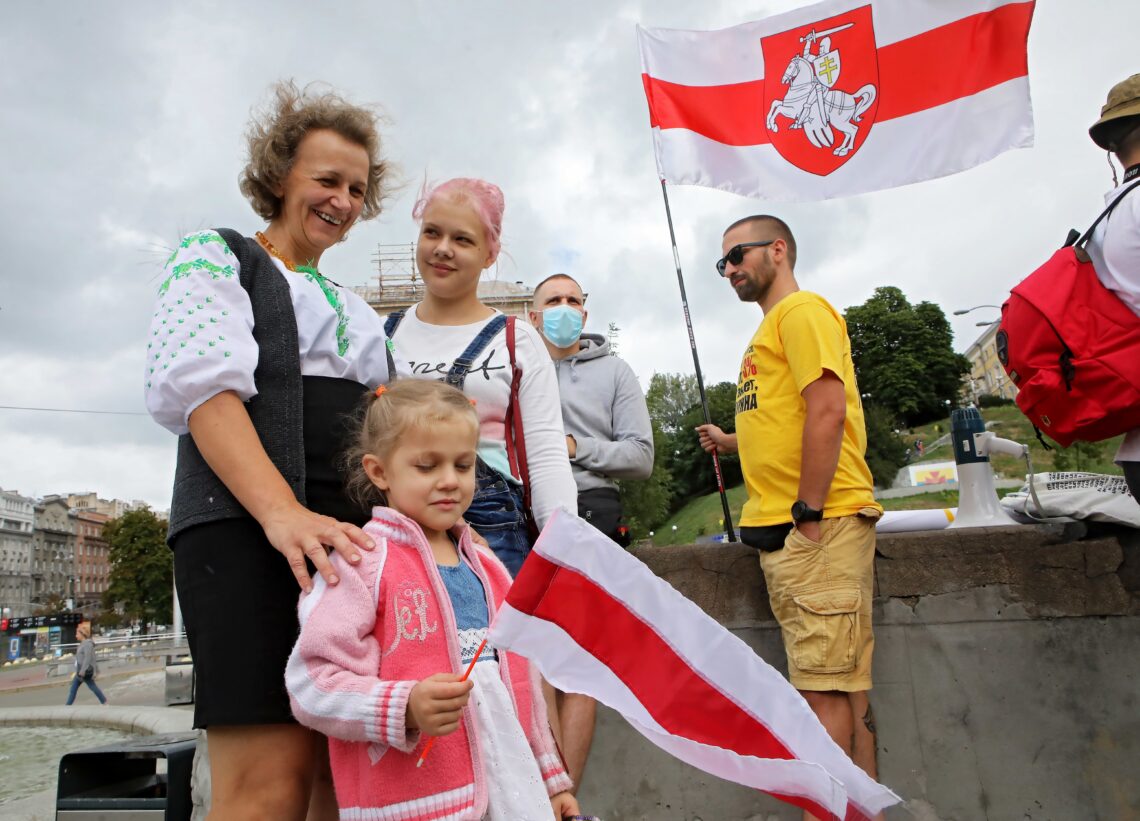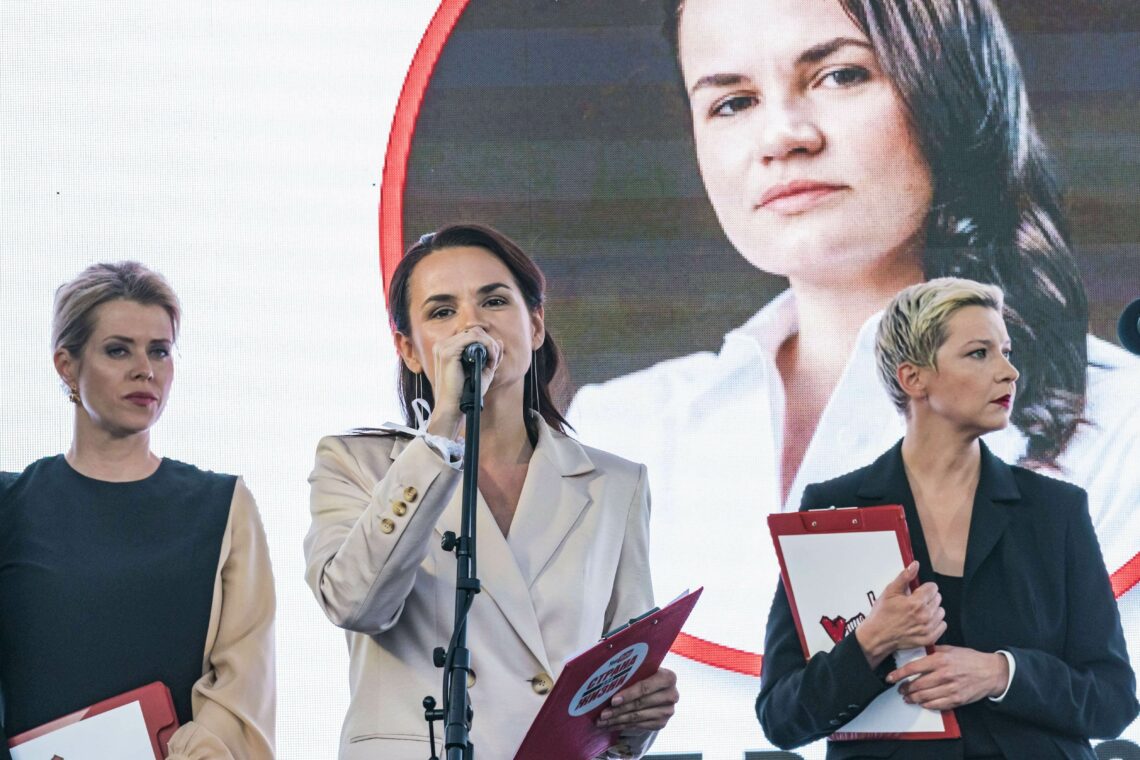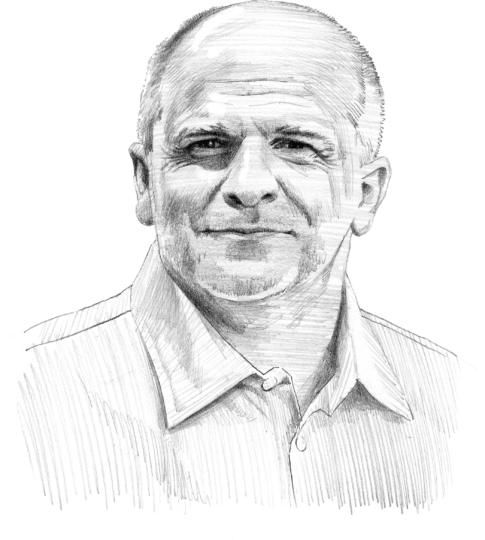Scenarios for Belarus
Before the elections, many observers compared the situation in Belarus to the color revolutions in Ukraine or Georgia. But the country did not receive as much support from the West. The future of Belarus remains uncertain.

In a nutshell
- Belarusians no longer want an authoritarian regime
- Only Western support could topple the current system
- Moscow will tolerate President Lukashenko until 2025
For a long time, Aleksander Lukashenko seemed to have found a way to stay in power forever. He was the “mildest” dictator in the world, living in equilibrium between Moscow and the West for over 20 years. Historical ties with Russia – in the economy, the army, or the secret services – were maintained. Promises to Brussels or Washington were almost never fulfilled, but the cunning leader’s assurances were often sufficient to appease the European Union.
At home, President Lukashenko was able to build a semblance of safety for his citizens. Their basic needs are met by the state. If the presidential elections of August 9 in Belarus had been held under normal conditions, they would have likely brought a new president to power. But even if the incumbent was reelected, a process of change with potentially serious international repercussions has been set in motion.
President Lukashenko’s main woe is the deteriorating economy. Belarus never outgrew its economic reliance on Russia after the collapse of the Soviet Union in 1991. Since Russian President Vladimir Putin’s rise to power in 1999, this dependency has intensified. Russia is Belarus’s most important trading partner – in 2018 it accounted for 51.5 percent of all Belarusian trade. The sale of energy resources imported from Russia provides most of the state’s revenues.
Even if the incumbent was reelected, a process of change has been set in motion.
Through this economic dependence, President Putin can influence the social situation in Belarus. For example, new taxes for Belarusian exporters as of 2024 have soured the public mood. (Russia is also the main recipient of Belarusian exports.)
President Lukashenko’s difficult political situation is made worse by the way the authorities in Minsk have mismanaged the coronavirus pandemic.
Irreversible changes
Most commentators tend to attribute the protests in Belarus to economic issues. However, public opinion is also shifting because of other factors, including new expectations driven by young Belarusians educated in Poland and Germany. It is no coincidence that, during the election campaign in Belarus, Poland was depicted as an exemplary country. Border services data show that the Polish-Belarusian border was crossed 17 million times in 2017-2018.
Like many other similar social movements, the current political revolution in Belarus is happening through online platforms, bypassing the official media channels. This is of particular importance in the Belarusian context.
Focusing solely on the economic factor is not sufficient to understand the situation in Belarus. The country has undergone a profound social change in recent years and we are now witnessing its effects. During previous decades, Belarusians had agreed to serious restrictions on their civil liberties in exchange for “security” – understood primarily as a guarantee of a certain standard of living. But in recent weeks, this increasingly fragile system collapsed.
The course of the protests in Belarus will follow that of others in the region.
The course of the protests in Belarus will follow that of others in the region. Revolutions in Central and Eastern Europe have taken place according to a certain pattern in recent decades. Social discontent rises; citizens mobilize and protest. Of late, these demonstrations have most often focused on electoral issues. This was the case in 2003 and 2004 in Georgia, where the Rose Revolution took place, and in Ukraine a year later, when the Orange Revolution broke out.
It is worth recalling that in 2006 there was also a wave of protests in Belarus against President Lukashenko ahead of the presidential elections – the “Denim Revolution.” The discontent we are witnessing is not new. But the scale of the protests is much larger. A new type of “nonpolitical” opposition leadership has also emerged.
Irregularities related to the election campaign were at the heart of this year’s protests. The authorities prevented two candidates from registering: Viktor Babariko and Sergei Tikhanovsky. Both of them were arrested. Mr. Babariko especially had significant support as a potential candidate. Inexplicably, the authorities agreed to register Svetlana Tikhanovskaya – Mr. Tikhanovsky’s wife. To sum up, the pre-election mobilization was the culmination of many social and economic trends that had begun in previous decades. It was also Belarusians’ response to discrimination against opposition candidates by the state.

The reasons why the Lukashenko administration initially ignored her became her most important assets during the campaign. Ms. Tikhanovskaya represents the young generation and challenges the assumption that only a man can lead the country. She benefited from her image as a political outsider. What could have been her weakness suddenly became her forte. It is worth noting that, in the broadly understood post-Soviet sphere, this is yet another example of a “nonpolitical” candidate challenging the political monopoly of men in top positions. In 2016, Kersti Kaljulaid was elected president of Estonia, and in 2019, Zuzana Caputova became president of Slovakia.
Of course, while there are certain historical similarities, the conditions for holding elections in Slovakia or Estonia are not comparable to those in Belarus. Electoral commissions are controlled by the authorities, the media prevent candidates other than those supported by the government from communicating with voters, and the voting procedure itself – as shown by numerous reports over recent years – is rife with irregularities. There are no reliable public opinion polls. It would be difficult to resolve the current political conflict only through elections. After Sunday’s vote, Aleksander Lukashenko declared himself president. China and Russia recognized his victory first. According to official data, the incumbent received 80.2 percent of the vote and his opponent, 9.9 percent. The result of the election is widely believed fraudulent. Representatives of individual voting commissions announced the results before summing them up. The next phase of protests began. On the postelection night, the government’s reaction to the demonstrations was relatively brutal, but unrest carried on.
Two days after the vote, the actions of the authorities in Minsk led Ms. Tikhanovskaya to leave Belarus. She had to make a public statement calling for an end to protests and was then transported to Lithuania. Protesters continued to gather, while security services reacted increasingly aggressively, even using live ammunition.
Scenarios
The Central and Eastern European experience shows that the first condition for a revolution to occur is the accumulation of social discontent. The second condition is some form of outside political support. In the region, such movements have relied on clear moral and political support from the West, most often the EU and the United States. This was the case in Poland at the turn of the 1980s and 1990s, or during the successive waves of the revolution in Ukraine. This support also came with logistic and training assistance. Only the simultaneous presence of these two factors could bring a change in regime.
Victory for the protest
In view of the scale of the postelection protests in Belarus (and the brutality of the law enforcement), several statements by key politicians from the EU and the U.S. State Department were made. However, they came late and were not strongly worded. Western media did not cover the matter extensively. Ms. Tikhanovskaya’s departure further demoralized the protesters. All this means that a victory for the protest movement is impossible at this stage.
Change of power
Another scenario involving external support for a revolution is also possible: the West and Moscow could jointly agree to a change of power. This model took place in Armenia, when Nikol Pashinyan came to power in 2018. This meant the toppling of Serzh Sarkisian’s administration, which had ruled Armenia for several years. The same happened last year in Moldova, when the EU, the U.S. and Russia supported the establishment of Maia Sandu’s cabinet, removing the long-standing shadow ruler of the country, oligarch Vladimir Plahotniuc.
Stronger Russia
Still, the most likely scenario is that Russia will keep supporting President Lukashenko. Weakened, President Lukashenko will have a harder time joining forces with the West. Further integration of Belarus with Russia is therefore likely. To stay in President Putin’s good graces, he will have to fulfill two conditions. First, he will need to solve the deep social conflict that emerged in Belarus during the election campaign through his own means. The second necessary condition will be for Mr. Lukashenko to assume that this is his last term in office, to stop leveraging the West against Russia and to begin preparing his exit. In exchange for this, Russia would shelter him during his last few years in office. The policy of the West toward Mr. Lukashenko will probably depend on how severe the repression will be.
Deal between West and Russia
A second, less probable scenario assumes that the actions taken by the EU and the U.S. in the face of the postelection situation in Belarus, although late, will prove effective. The scenario of jointly agreed change seems more likely – a deal between the West and Russia. For Moscow to agree, the transfer of power would have to be based on the assumption that Belarus will not change its strategic orientation toward Russia.
Perhaps President Putin is more interested in the potential removal of Mr. Lukashenko (especially if it happened through Western influence) than the West is. Among the Western political elite, the Belarusian president is not so unpopular as to require immediate removal. Brussels could become more willing to get involved if protests were brutally repressed, especially in the presence of sensational media coverage.
Such a scenario would require great commitment from the West and also involve representatives of the Lukashenko regime in the transformation process, which would likely be gradual. This would lead to economic reforms in Belarus, the abolition of censorship, and other desirable outcomes.
Each of these scenarios assumes an active political role for Russia. Even profound social changes are possible in the eventualities discussed, but it would be unrealistic to expect that Belarus will become geopolitically aligned with the West.








